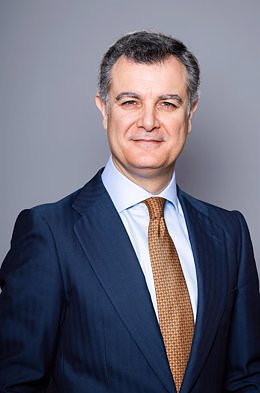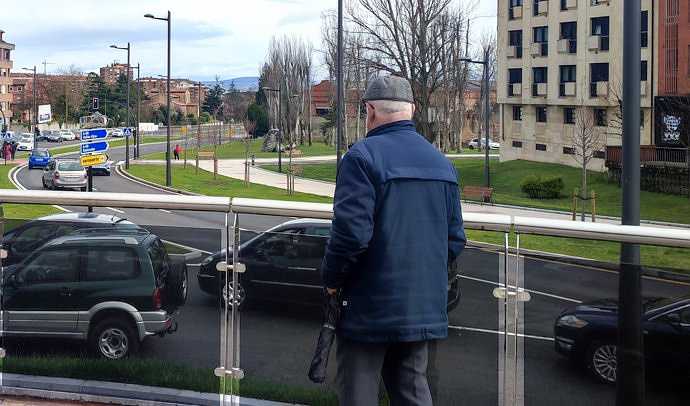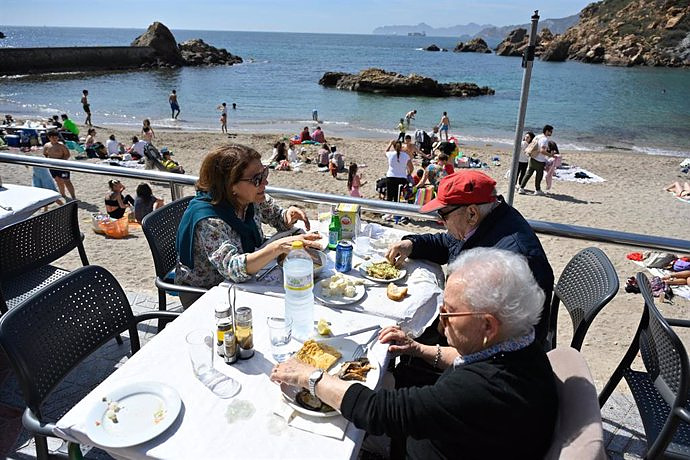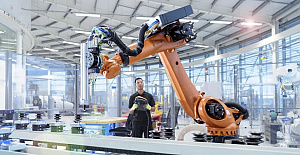In 2010, there were approximately 460,000 pilots in the world. In fifteen years, it will take more than double. How to cope with the demand without sacrificing the quality of the training?
will there be a pilot in the plane ? The issue is more serious. Indeed, if in the past few years, the airlines benefit from the high number of drivers in europe and the u.s. in search of a place in a cockpit, to impose terms of compensation, this ultralibéralisme is not necessarily good news for the safety of air transport. In fact, some of those applicants are ready to everything, even to pay to fly. These professionals are in great economic precariousness, often have no other solutions to maintain their skills, but also to have a chance, ultimately, to repay the loans contracted to finance their training.
>> Our complete file on the salon du Bourget 2015
In the short term, this situation, which can make the happiness of some low-cost carriers, especially in the Asia-Pacific region, poses a problem to the major aerospace manufacturers. As to Airbus predicts that the fleet serving the region will increase by 70% in the twenty years to come. More globally, Boeing estimates that, by 2033, to the scale of the planet, it will be necessary to train 533 000 new pilots line.
Your support is essential. Subscribe for $ 1 support UsBy 2033, more than half of them will work for these companies from Asia-Pacific and Africa for which the training is not a priority. Because, if companies in the Gulf have invested in training centres ultra-modern world where they can shape, to the standards of the anglo-saxons, of the armies of the co-pilots to become commanders of edge of tomorrow, the low-cost airlines Asia-Pacific simply select any of the HP drivers, in search of an experience before a career evolution. A parameter that the manufacturers take into account investing in training centres closer to their new customers. Last summer, Airbus announced its decision to set up two centers in Mexico, and is also gearing up for a location in Manila, the Philippines.
Back to the seafarers the direction of the air
The international regulation requires a minimum of 250 hours of flight into a course which lasts on average two years to train a pilot. The vast majority of these hours can be made on board of flight simulators whose accuracy increases as the progress of the student pilot. For cost reasons, but also to reduce the processing time, the temptation to simulate more than flying, and most importantly, moving beyond the regulatory minimum is great.
However, the simulation, as realistic as it is, has its limits. The upsurge in the number of air accidents due to loss of control in cruise (one-third of the causes of crashes) speaks to the professionals in the air transport. To avoid that the crew, faced with an unusual situation, does not respond appropriately to the moment where it disconnects the auto-pilot to take the controls, the ICAO recommends that you restore the basic pilot. Not only in the curriculum, initial, but in the course of the training, recurring which are subject to pilots throughout their career.
The idea is to get the professional to install the controls of a light aircraft, aerobatic and place in conditions that are atypical (flights to big slope, acceleration, stalls, starts, spin...). It appears, indeed, an urgent need to give back to drivers the direction of the air, to teach them to feel the movements of their device and reconnect to their environment.
The air transport is undoubtedly entered a transitional period. And the explosion of the traffic in Asia-Pacific and in the Gulf serves only to accelerate the transformation. For decades, the training was felt to have managed the transition between the time when the flying of the aircraft and the current era where we manage the flights. Probably because most line pilots were still from aero-clubs and occupying their leisure time to browse on light aircraft or gliders to keep their contact with the reality.
today, the new generation of drivers do not come to aviation, flying clubs, but by the game console. And it does not steal any more for her pleasure, or so she virtually. The captain of the Boeing 777 of Malaysia Airlines was lost forever in the Indian ocean had his own flight simulator in his living room. The vocational training must adapt to this reality. And the sooner the better.
Read our complete file
The salon du Bourget
At le Bourget, the manufacturers dream of putting electricity in the air Ralph Nader : "The leaders of Boeing should resign !" Airbus announces a new single-aisle for the very long distances

 Exploring Cardano: Inner Workings and Advantages of this Cryptocurrency
Exploring Cardano: Inner Workings and Advantages of this Cryptocurrency Seville.- Economy.- Innova.- STSA inaugurates its new painting and sealing hangar in San Pablo, for 18 million
Seville.- Economy.- Innova.- STSA inaugurates its new painting and sealing hangar in San Pablo, for 18 million Innova.- More than 300 volunteers join the Andalucía Compromiso Digital network in one month to facilitate access to ICT
Innova.- More than 300 volunteers join the Andalucía Compromiso Digital network in one month to facilitate access to ICT Innova.-AMP.- Ayesa acquires 51% of Sadiel, which will create new technological engineering products and expand markets
Innova.-AMP.- Ayesa acquires 51% of Sadiel, which will create new technological engineering products and expand markets The Prosecutor's Office requests that the AN investigate the detainee for terrorism for damaging an ax in a McDonalds in Badalona
The Prosecutor's Office requests that the AN investigate the detainee for terrorism for damaging an ax in a McDonalds in Badalona Balearic PSOE denounces the director of IbSalut for prevarication for renouncing the mask claim file
Balearic PSOE denounces the director of IbSalut for prevarication for renouncing the mask claim file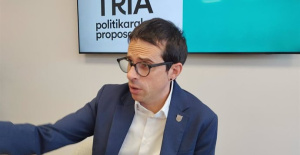 Otxandiano reproaches that PSOE "has lent itself" to taking out ETA in the campaign, like the extreme right against Sánchez
Otxandiano reproaches that PSOE "has lent itself" to taking out ETA in the campaign, like the extreme right against Sánchez Puigdemont claims to have a "well grasp" of the State and asks to "be respected" to obtain more transfers
Puigdemont claims to have a "well grasp" of the State and asks to "be respected" to obtain more transfers How Blockchain in being used to shape the future
How Blockchain in being used to shape the future Not just BTC and ETH: Here Are Some More Interesting Coins Worth Focusing on
Not just BTC and ETH: Here Are Some More Interesting Coins Worth Focusing on Valencia displays its "innovative and technological potential" at the Emerge Americas event in Miami
Valencia displays its "innovative and technological potential" at the Emerge Americas event in Miami The CSIC incorporates the challenges of robotics, nanotechnology and AI in the new strategic plan for biomedicine
The CSIC incorporates the challenges of robotics, nanotechnology and AI in the new strategic plan for biomedicine Innovation allocates 9.1 million to train 74,000 people and guarantee digital inclusion
Innovation allocates 9.1 million to train 74,000 people and guarantee digital inclusion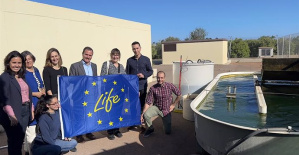 LIFE SPOT manages to develop new green treatments that eliminate groundwater contamination
LIFE SPOT manages to develop new green treatments that eliminate groundwater contamination A million people demonstrate in France against Macron's pension reform
A million people demonstrate in France against Macron's pension reform Russia launches several missiles against "critical infrastructure" in the city of Zaporizhia
Russia launches several missiles against "critical infrastructure" in the city of Zaporizhia A "procession" remembers the dead of the Calabria shipwreck as bodies continue to wash up on the shore
A "procession" remembers the dead of the Calabria shipwreck as bodies continue to wash up on the shore Prison sentences handed down for three prominent Hong Kong pro-democracy activists
Prison sentences handed down for three prominent Hong Kong pro-democracy activists ETH continues to leave trading platforms, Ethereum balance on exchanges lowest in 3 years
ETH continues to leave trading platforms, Ethereum balance on exchanges lowest in 3 years Investors invest $450 million in Consensys, Ethereum incubator now valued at $7 billion
Investors invest $450 million in Consensys, Ethereum incubator now valued at $7 billion Alchemy Integrates Ethereum L2 Product Starknet to Enhance Web3 Scalability at a Price 100x Lower Than L1 Fees
Alchemy Integrates Ethereum L2 Product Starknet to Enhance Web3 Scalability at a Price 100x Lower Than L1 Fees Mining Report: Bitcoin's Electricity Consumption Declines by 25% in Q1 2022
Mining Report: Bitcoin's Electricity Consumption Declines by 25% in Q1 2022 Oil-to-Bitcoin Mining Firm Crusoe Energy Systems Raised $505 Million
Oil-to-Bitcoin Mining Firm Crusoe Energy Systems Raised $505 Million Microbt reveals the latest Bitcoin mining rigs -- Machines produce up to 126 TH/s with custom 5nm chip design
Microbt reveals the latest Bitcoin mining rigs -- Machines produce up to 126 TH/s with custom 5nm chip design Bitcoin's Mining Difficulty Hits a Lifetime High, With More Than 90% of BTC Supply Issued
Bitcoin's Mining Difficulty Hits a Lifetime High, With More Than 90% of BTC Supply Issued The Biggest Movers are Near, EOS, and RUNE during Friday's Selloff
The Biggest Movers are Near, EOS, and RUNE during Friday's Selloff Global Markets Spooked by a Hawkish Fed and Covid, Stocks and Crypto Gain After Musk Buys Twitter
Global Markets Spooked by a Hawkish Fed and Covid, Stocks and Crypto Gain After Musk Buys Twitter Bitso to offset carbon emissions from the Trading Platform's ERC20, ETH, and BTC Transactions
Bitso to offset carbon emissions from the Trading Platform's ERC20, ETH, and BTC Transactions Draftkings Announces 2022 College Hoops NFT Selection for March Madness
Draftkings Announces 2022 College Hoops NFT Selection for March Madness



